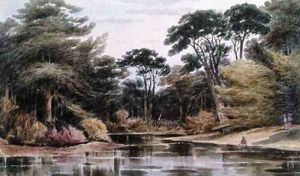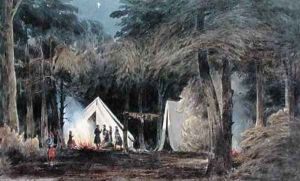William the Younger MacIlvaine Paintings
William the Younger MacIlvaine, also known as William MacIlvaine Jr., was an American artist born in 1813. He is often recognized for his work as a painter, particularly in the realm of landscape painting. His life and career were set against the backdrop of a burgeoning American nation, one that was rapidly expanding and developing its own cultural identity separate from European influences.
William was born into a time of artistic exploration in the United States. The Hudson River School, with its emphasis on romantic landscape painting, was in its ascendancy, and though MacIlvaine is not typically classified strictly within this group, he was undoubtedly influenced by its focus on the natural world and the sublime. His works often depicted the vast expanses of the American landscape, echoing the sentiments of discovery and awe that were prevalent in the culture of the time.
MacIlvaine's career was not limited to painting; he also worked as an illustrator and lithographer, contributing to the visual documentation of American life. His illustrations captured the diversity of the country's scenery and its people, providing a visual record that complemented the written word in books and periodicals of the era.
Despite his contributions to American art, William the Younger MacIlvaine remains a relatively obscure figure in art history. Details about his life, including his artistic training and personal relationships, are not well-documented, which is not uncommon for artists of his time, especially those who did not achieve widespread fame.
William the Younger MacIlvaine's death in 1867 marked the end of a career that had spanned a significant period in American history. While his work may not be as celebrated as some of his contemporaries, it remains a part of the tapestry of 19th-century American art. His paintings and illustrations are valuable for their portrayal of the American landscape and society during a time of national growth and self-definition.

